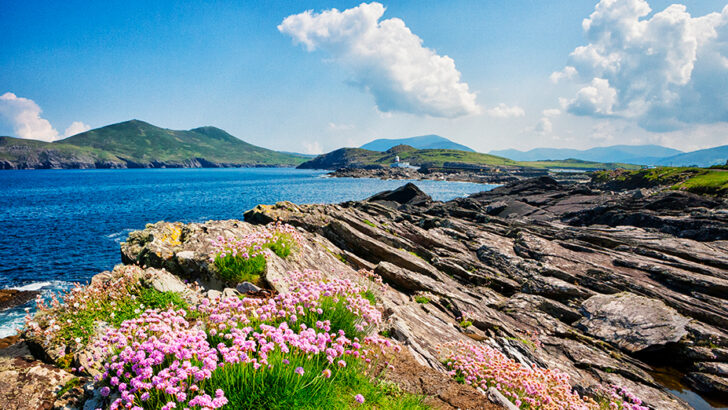Journal of the Kerry Archaeological and Historical Society, series 2, vol. 24, for 2024, edited by Tony Bergin, €20,00 / £16.99; inquiries to Kerry County Library, Moyderwell, Tralee, Co. Kerry, V92 X092, Ireland; the editor can be reached at journal@kerryhistory.ie.
It is a familiar saying that all politics are local. The same is essentially true as well of history: the real history of a country is to be measured in local events and local developments, whatever the centralising “capitalists” in Dublin may think. By creating a richer sense of local identity, locals help create a more mature sense of our changing national identity.
One of the best, indeed primary sources of that history, is to be found in the articles published year by year in our local history journal, such as Seanchas Ardmacha, Cathair na Mart, The North Munster Journal, and indeed, the Dublin Historical Record. Historians and archaeologists would be lost without these accumulating resources.
Special
They keep us in contact with the past in a very special way. This applies as well as to matters of religion and Church affairs, for ecclesiastical buildings and events have been a staple in such journals since they began many of them back in the early 19th century.
The Kerry Archaeological and History Society is a leading light of these journals. Their current publication under review is their latest annual volume, and it provides, as usual, a rich and varied menu of all things Kerry. This latest volume of the KAHSJ, expertly edited by Tony Bergin, exhibits the scholarship one has come to expect in this magazine. It has studies on five completely different subjects.
Adrian Fitzgerald describes the unsuccessful attempt his ancestor, Maurice Fitzgerald (1772–1849), 18th Knight of Kerry, made to establish a steam packet company to run ships between Valentia Island and Halifax in the Canadian Province of Nova Scotia to carry passengers and mails.
Helen O’Carroll locates and describes the Famine Burial Grounds of Tralee Workhouse. John O’Connor provides an account of the building of Tearaght Lighthouse in the Blasket Island-archipelago.
Tony Bartlett presents the results of the archaeological works undertaken at Knockavrogeen West Megalithic Tomb in the Dingle Peninsula. Jeremias Cronin records the travails of Brian Ó Ceallaigh, the Celtic Studies scholar, as he was trapped in Germany while studying in Marburg University at the outbreak of World War I.
Maurice was an improving landlord and among other developments extended the Island’s slate quarries”
So much for the contents over all: now for a closer look at one of the contributions that is especially interesting. Adrian Fitzgerald’s article is a fascinating account of the efforts of an ancestor to improve the economic conditions of his area. Maurice Fitzgerald, 18th Knight of Kerry, resided on his estate, aptly named Baile an Ridire, the Town of the Knight, near Listowel.
Extensive
However, the family also had extensive land holdings on Valentia Island. These had been purchased from the Annesley family in 1757. Maurice was an improving landlord and among other developments extended the Island’s slate quarries. It seems that much of the slate on the roof of Westminster Palace, where the House of Commons sits, was imported from the Island’s quarries.
In promoting his various projects Maurice was encouraged and assisted by Alexander Nimmo, a remarkable engineer and geologist. A Scot, he came to the Office of Public Works in Dublin where he designed thirty piers and harbours along the Southern and Eastern Seaboards, including the pier at Valentia Island. Maurice and Nimmo were kindred spirits and Nimmo was a key ally of Maurice in promoting the Packet Steam Project linking Valentia and Halifax in the Canadian Province of Nova Scotia.
It seems that the success of the proposed shipping-line was assured. It was announced that the Calpe was ‘nearly ready for sea’”
Maurice took the first steps towards setting up the shipping line with the establishment in June 1824 of the American and Colonial Steam Navigation Company.
Subsequently he busied himself in London seeking financial support for the new company. Initially it seems that the success of the proposed shipping-line was assured. It was announced that the Calpe was ‘nearly ready for sea’ and that another ship was ‘building in Glasgow’. However, owing to a collapse in the London financial market the project stalled. Nor did serious disagreements among the directors of the company help the project.
Committed
Maurice, however, remained committed to the project. A revised prospectus was published in 1827. But there was little further investor interest. The only remaining ship, the Calpe, was sold and no more was heard of the American and Colonial Steam Navigation Company.
The Trans-Atlantic Cable was laid between Valentia Island and Heart’s Content, Newfoundland, in 1866”
Before concluding his article, Adrian Fitzgerald ruefully compares the success of the Valentia Island Trans-Atlantic Cable Telegraph Company with Maurice’s failed attempt to link the Island to Canada with a shipping line.
The Trans-Atlantic Cable was laid between Valentia Island and Heart’s Content, Newfoundland, in 1866. It operated successfully for a hundred years until it was wound up by Western Union International in 1966. And the Cable Station continues to benefit Valentia Island as it is its main claim to be awarded the UNESCO World Heritage Site Award.


 Valentia Island in Kerry, the rugged scene of great ambitions in the past.
Valentia Island in Kerry, the rugged scene of great ambitions in the past. 